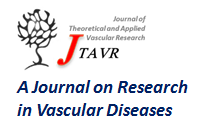DOI: 10.24019/issn.2532-0831
Online ISSN 2532-0831

Journal of Theoretical and Applied Vascular Research
Journal website: http://www.vasculab.eu/jtavr.xml
JTAVR 2018;3(1): 25-32

Evaluation of an accelerometer-based device to monitor compliance on patients wearing medical compression stockings

E Grenier1, D Rastel2, C Chaigneau1
2Vascular physician, responsible for medical device vigilance, SELURL Philangio, 30 place Louis Jouvet, 38100 Grenoble, France
accepted Nov 3, 2018
EPub ahead of Print: Dec 9, 2018
Published: Jul 7, 2019
Abstract
I- INTRODUCTION
Medical compression, for the most part employing textile methodology, constitutes the principal conservative treatment prescribed in the case of venous disorders. However, its role is subject to debate in the scientific community. Treatment is only effective if the orthosis is worn on a daily basis and clinical studies suffer from significant bias in relation to how patient compliance is measured.
II- AIMS
An electronic measurement device has been developed to measure patient compliance; it is based on movement detection by an accelerometer sensor. The aim of the present study is to compare objective data captured by the electronic device with wear times as reported by studied patients.
III- METHODS
The present study was conducted on 5 patients who were being treated for uncomplicated superficial venous insufficiency with a medical prescription for class 2 compression hose to be worn daily. Two pairs of currently-marketed stockings were provided to the patients. One stocking of each pair was fitted with the electronic monitoring device. The patients were requested to wear their compression hose as normal and to note the dates and times of any incidents and any undesirable effects.
IV- RESULTS
During the course of the study, the ten instrumented stockings captured 34 days that were representative of wear and 48 non-wear days. The absolute mean errors (and the standard deviation associated) calculated on the basis of the wear times reported by the patient and wear-times measured by the devices range between 5 (5) minutes and 83 (26) minutes, which corresponds to relative errors of between 1 (0.9)% and 19 (7.1)%. For 27 days, the absolute difference between the subjective and the objective wear-times is less than 60 minutes.
The results gathered by the sensors during non-wear days are 0 minute for 4 patients, representing 41 days of experimentation (85%). On the other hand, one patient's devices incorrectly wrongly recorded average wear periods of 55 (55) minutes and 23 (16) minutes. No incidents or undesirable effects were reported by the patients.
V- CONCLUSION
The specially-developed electronic device is based on the principle of detection of phases of wear as registered by an accelerometer sensor. Integration of the system in an elastic compression stocking enables acquisition, analysis and interpretation of an acceleration signal thus providing objective monitoring of patient compliance as a function of the periods of wear and non-wear.
since Dec 9, 2018
 - DOI: 10.24019/jtavr.51 - Corresponding author:Ing. Etienne Grenier, EMail etienne.grenier@sigvaris.com
- DOI: 10.24019/jtavr.51 - Corresponding author:Ing. Etienne Grenier, EMail etienne.grenier@sigvaris.com © 2018 Fondazione Vasculab impresa sociale ONLUS. All rights reserved.
© 2018 Fondazione Vasculab impresa sociale ONLUS. All rights reserved.